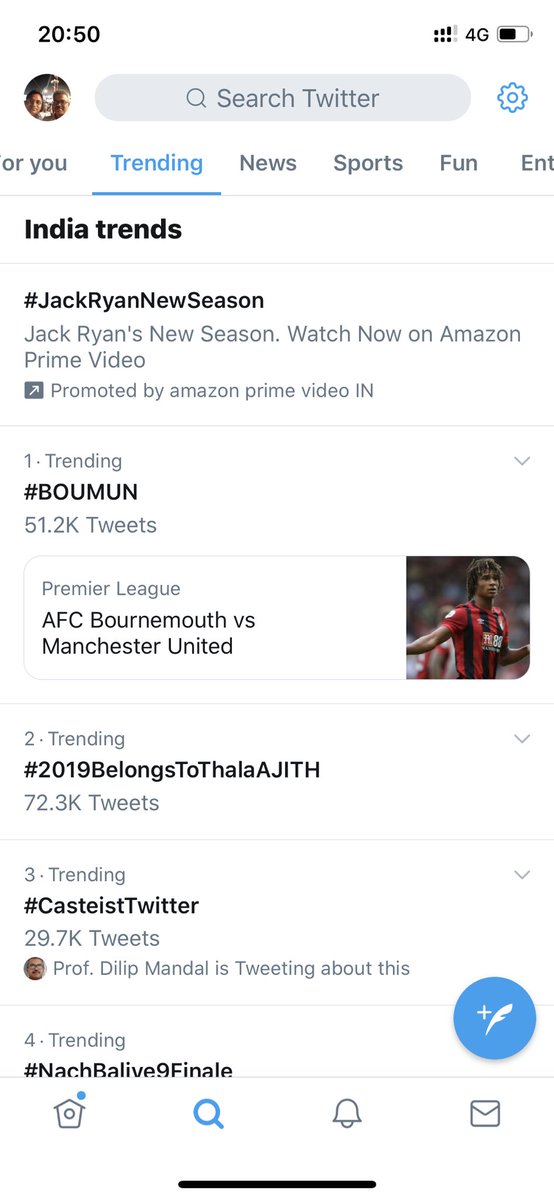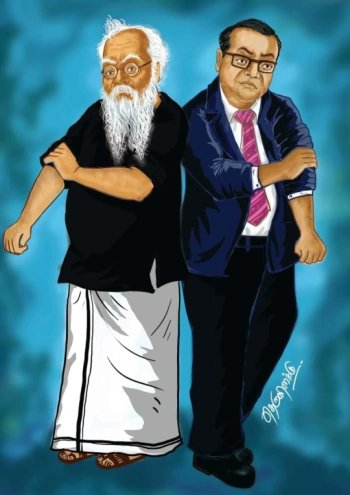
Trends on Twitter in the last week tells a story of an unheard-of caste assertion and pride in India. Within a span of five days, activists from marginalised communities trended at least five top hashtags on Twitter alleging caste bias.
The “blue tick” on Twitter, which is considered a symbol of authenticity and massive reach, has come under fire with many alleging that it is accorded unfairly to those belonging to the upper castes.
On Wednesday, 6 November, #cancelallblueticksinIndia was the No 1 trend in India with more than 54,000 tweets accusing the platform of caste discrimination by suppressing the voices of the marginalised.
How the Campaign Started
The protests began after Twitter imposed restrictions on the account of Dilip Mandal, an adjunct professor at Makhanlal Chaturvedi National University of Journalism and Communication and a consulting editor at a news website. His suspension was considered, especially by users from marginalised communities, as oppression of the underprivileged castes and minorities at the hands of the micro-blogging platform.
Although his account was restored, the flurry of tweets followed under #CasteistTwitter, #JaiBhimTwitter, #TwitterHatesSCSTOBCMuslims, , #cancelallBlueTicksinIndia and #JaiBhimJaiPeriyar.
What Each of The Hashtags Stand For
The hashtag that took the campaign beyond the borders and made it trend globally as well as in India was #cancelallBlueTicksinIndia which asked Twitter to remove the verification tick from all profiles till it comes up with a more “transparent and socially fair policy for putting the blue tick beside a person’s name”.
Dilip Mandal, who was recently verified before being suspended from the site, told The Quint, “We don’t know what process Twitter follows for verifying people since it is not very transparent. But it creates a hierarchy in the conversation.”
सबको दो, या सबका हटाओ. ये तो बताओ कि इसका नियम क्या है. लोकतंत्र में संवाद का मामला है. निजी खेती नहीं है. आपके बाप का राज भी नहीं है. समझे या नहीं समझे? #cancelallBlueTicksinIndia
878 people are talking about this
Twitter India's bias against Indian Bahujans(OBC+SC+ST) and minorities isn't going unnoticed!RW politicians and trolls are nothing but propagators of casteism and communalism veiled as nationalism in India.#ब्राह्मणवादीट्विटर #cancelallBlueTicksinIndia
145 people are talking about this
A day after Mandal’s account was restored, on 2 November, people tweeting with #CasteistTwitter claimed that hundreds of activists, journalists and public personalities from the marginalised communities are not verified on Twitter despite having a base of huge followers.
Hundreds of activists, journalists, writers of tribals, Dalits and other marginalized communities are not verified on @TwitterIndia inspite of having much more followers in comparison of thousands varified accounts. @Twitter must stop this Neo Untouchabilty. #CasteistTwitter
218 people are talking about this
The hashtag which trended on top all through the day also asked for the sacking of Manish Maheshwari, Twitter India’s MD. #SackManishMaheshwari which was also growing strength was mysteriously removed from the list of top trends.
#CasteistTwitter is now trending at no. 3 in India. @jack must sack @manishm345 immediately. He has spoiled the reputation, business, and credibility of @TwitterIndia.
75 people are talking about this
"With great power comes great responsibility" @jack @Twitter you doing nothing to stop hate speech, bigotry instead targeting and trying to suppress dissent. We also know how its done. #CasteistTwitter
342 people are talking about this
On the same day, another hashtag #JaiBhimTwitter (Jai Bhim is a popular Dalit slogan) was also one of the top trends. “Jai Bhim” which literally means “Victory to Bhim”, referring to BR Ambedkar, reminded Twitter users of the principles propagated by the principal architect of the Constitution.
Jai Bhim literally means "Victory to Bhim" referring to B. R. Ambedkar, an Indian jurist, economist, politician and social reformer and the principal architect of the Constitution of India... #JaiBhimTwitter
274 people are talking about this























0 Comments